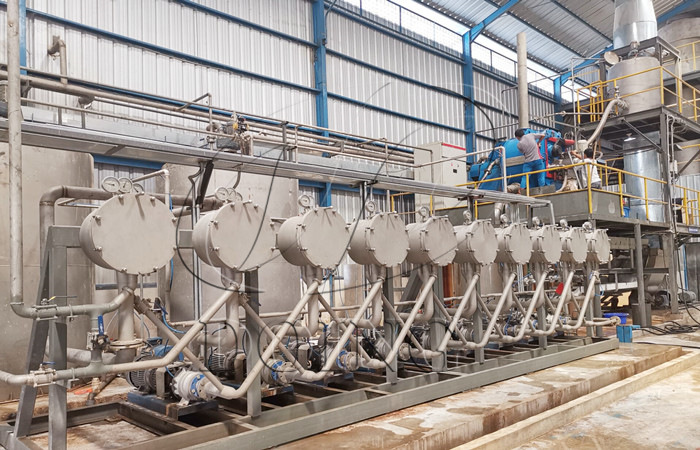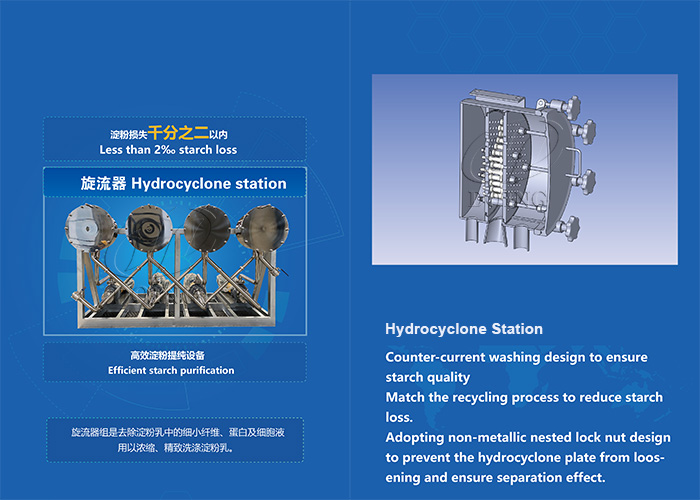Blog
 2024-10-26
2024-10-26The hydrocyclone is an essential separation and grading equipment in a starch processing production line. It can ultimately produce a pure starch slurry with a purity of 23 degrees Baume, making the next dehydration process more efficient.
In the starch production process. It is an ingenious device that harnesses the principles of centrifugal force to meticulously separate and classify starch from a myriad of other substances within a slurry mixture. This sophisticated piece of equipment operates on the fundamental concept of sedimentation, capitalizing on the varying specific gravities of starch granules and other materials to effectuate a clean separation.

The hydrocyclone unit structure and principle
The hydrocyclone unit is composed of 6 to 18 units connected in series. The number of hydrocyclones can be designed according to the customer's requirements. At the heart of this hydrocyclone unit is a cylindrical-conical vessel, ingeniously designed to facilitate the separation process. The slurry, a mixture of starch and various impurities, is introduced into the hydrocyclone through a tangential inlet located at the top of the unit. As the slurry enters, it is propelled into a high-speed vortex, a whirling motion that is the hallmark of the hydrocyclone's operation. This rapid spinning action generates a powerful centrifugal force, which is the driving force behind the separation mechanism.

When the hydrocyclone unit runs, the heavier particles, which in this context are the starch granules, are propelled towards the outer wall of the conical section due to their higher specific gravity. From there, they descend and are discharged through the underflow outlet at the bottom of the unit. This outlet is strategically positioned to capture the denser particles, ensuring that the starch is effectively separated from the lighter impurities.
Conversely, the lighter particles, along with the water and other less dense materials, are carried toward the center of the vortex and exit through the overflow outlet situated at the top of the cylindrical section. This overflow stream is typically composed of the finer, less dense components that do not settle under the influence of the centrifugal force.
The hydrocyclone unit advantages
The hydrocyclone unit's continuous operation is a testament to its efficiency and reliability in the starch production industry. It allows for a seamless and uninterrupted flow of material, which is crucial for maintaining high throughput and consistent product quality. The unit's design not only ensures a thorough separation but also minimizes the need for manual intervention, thereby reducing labor costs and the potential for human error.
In the realm of starch production, the hydrocyclone unit stands as a paragon of technological advancement, offering a methodical and precise approach to separating starch from its impurities. Its ability to perform this task with such efficiency and consistency has revolutionized the industry, making it an indispensable component in the quest for producing high-quality starch.
Want to know more about our products or services? Fill out the contact form below, and we’ll to get back to you and you will get the price list. Please also feel free to contact us by email or phone.( * Denotes a required field).